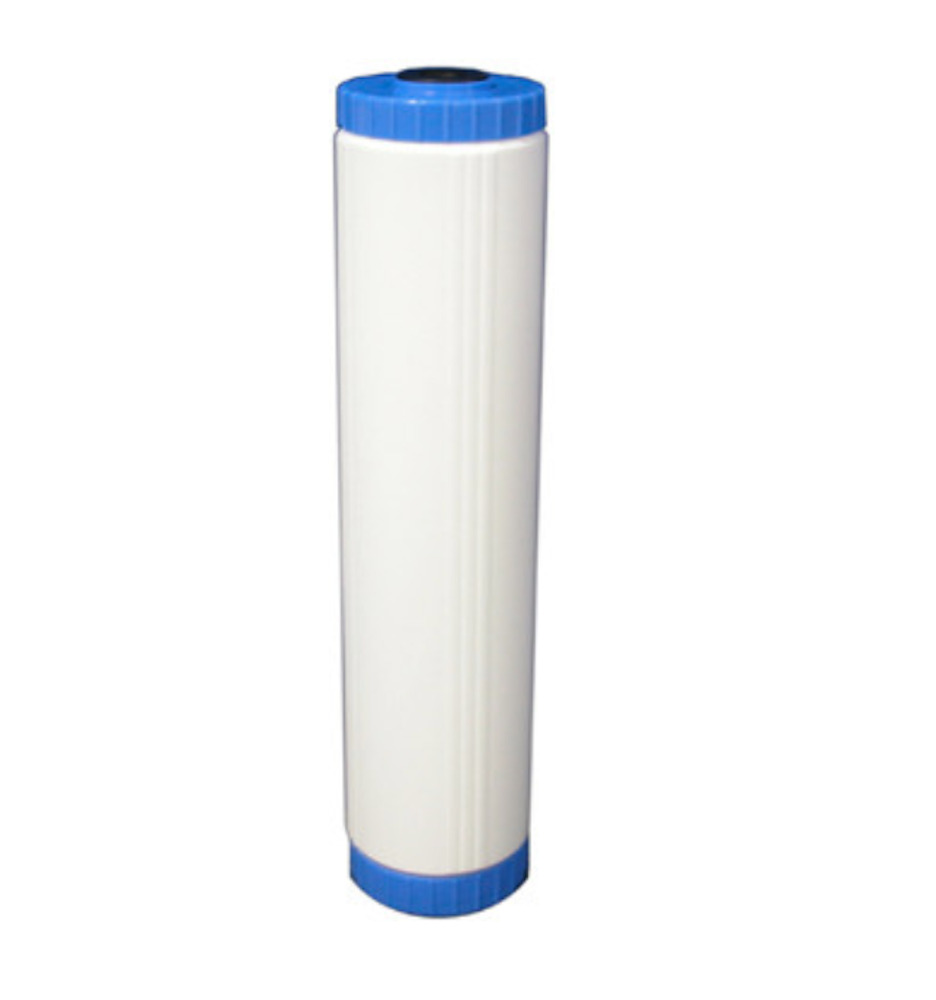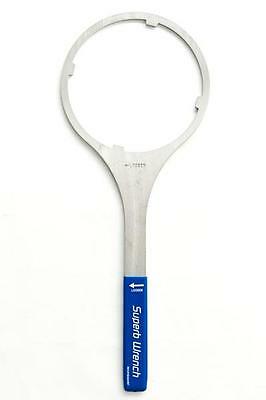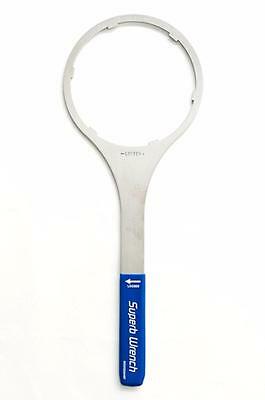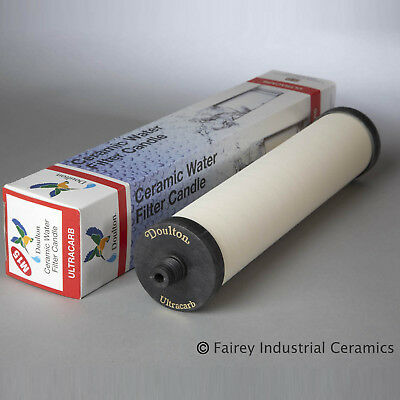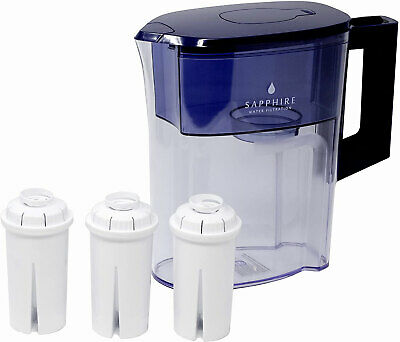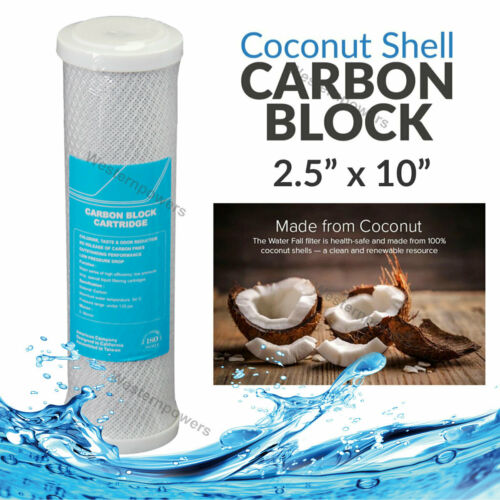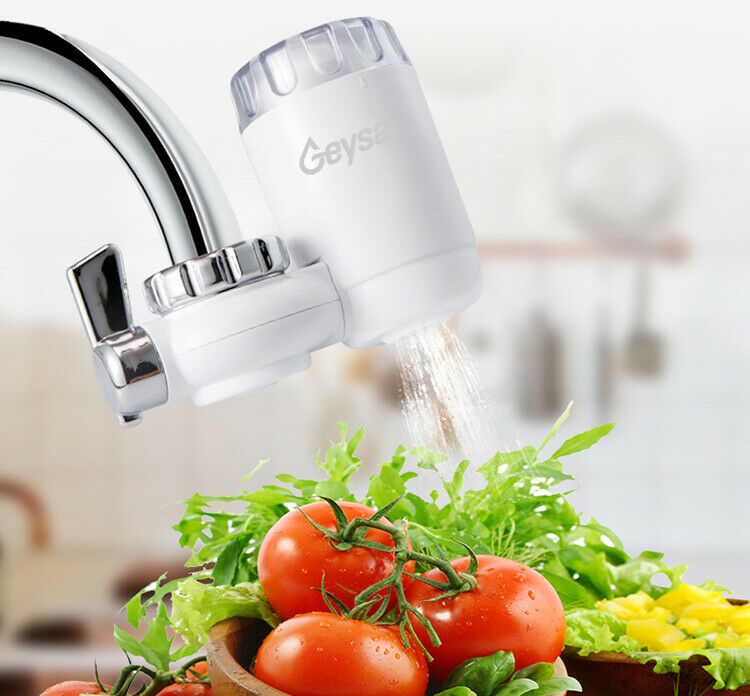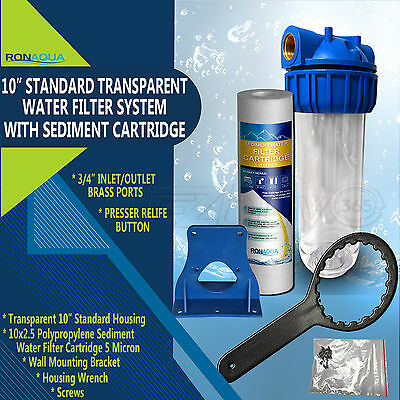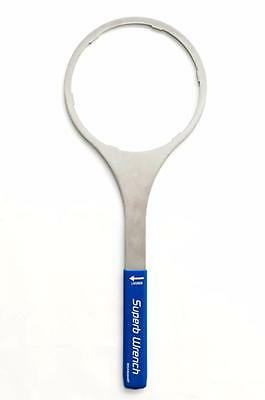-40%
BONE CHAR Big Blue Whole House Water Filter Cartridge 4.5"x 20" Reduces Fluoride
$ 50.68
- Description
- Size Guide
Description
FOR SALE4.5" x 20" Bone Char
Cartridge For Fluoride Removal (4.5" x 20")
Removes or Reduces Flouride
Fits any big blue 4.5" x 20" Housing
Removes 4,665ppm of flouride
Suggested flow - 5 gpm
Bone char carbon is a unique carbonaceous adsorbent manufactured from the treatment and carbonization of selected grades of animal bone and is used for liquid phase filtration to remove organic and inorganic species such as color bodies and many heavy metals. Bone char is different from
activated carbon
in that it contains both carbon surface area and hydroxyapatite lattice surface area.
Features and Benefits
Good adsorption of various heavy metals
Produced from aged bones for better efficiency
Maintains alkalinity in adsorbate
The material has found applications in the sugar and water purification industries as a cost effective and efficient means of removing trace impurities. The material has been shown to have a high adsorption capacity for a wide range of inorganic and organic contaminants including heavy metals. Bone char has also been used in the removal of radioisotopes from water. Bone Char is especially effective in removing radioactive particles, arsenic and THM's from the water as well as fluoride
ABSORPTION of METALS
ALUMINUM
Very effective in removing soluble aluminum. Adsorption influenced by pH and retention time. Best results at ph 7 or above.
ARSENIC
Largely dependent upon form of arsenic (ie. AsIII or AsV). pH has considerable influence. At low pH almost no adsorption occurs. Affected by Protonation.
CADMIUM
Bone char is better than conventional precipitation and/or coagulation processes. Superior results in soft water. Retention time on par with aluminum.
CHROMIUM
Much dependent upon form present, ie. cation or anion, and valency (chrome III or chrome VI). Chrome III adsorbs well.
COPPER
Adsorption dependent upon pH and retention time.
IRON
Dependent upon form of iron. Better results with organic iron than with inorganic. Inorganic results dependent upon valency. Short retention times suffice.
LEAD
Very effective with short retention time (ie. 1 minute or less)
MANGANESE
Very effective. Pilot results good. Competition from other methods of oxidation.
MERCURY
Best with organic mercury. Inorganic mercury is dependent upon valency (mercury I and II). Although similar, the higher charged monatomic mercury II has a greater affinity for Bone Char than mercury I.
NICKEL
Adsorption best at higher pH. Requires high retention time. At 5 pH almost no adsorption.
SILVER
Quite rapidly adsorbed. Better at low concentrations in solute. High deposits of silver on bone char inhibit adsorption. Adsorption better at pH 5.
ZINC
Efficiency dictated by contact time and pH. Both pilot plant and full scale plant performance good.
ABSORPTION of NON-METALS
BROMINE
Bone Char is effective in removing free bromine. Bromine form is important too. In presence of potassium and sodium adsorption decreases.
CHLORINE
CHLORAMINES
Bone Char is minimally effectively in reducing chlorine or chloramine.
COLOR
Retention time required is usually about 6 – 15 minutes, dependent upon chemical make up of color. Can be used in slow sand, rapid gravity or pressure filters.
FLUORIDE
Adsorption onto Bone Char is good, but influenced by pH – better at 6.5 or lower. Concentrations of fluoride present also influences performance. Activated carbons do not effectively adsorb fluoride.
PESTICIDES
Good at removing organo-chlorine pesticides (ie. Dieldrin, septachlor, etc.). not very good at atrazine, etc.
Track Page Views With
Auctiva's FREE Counter
